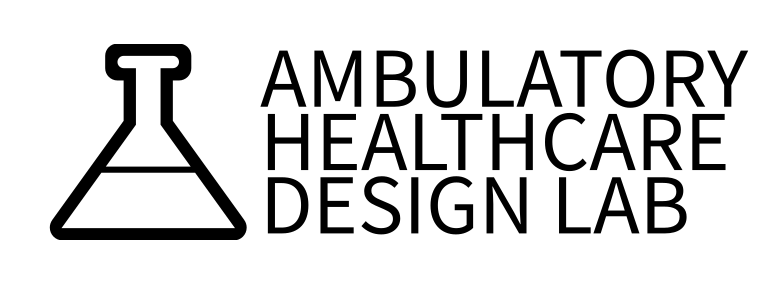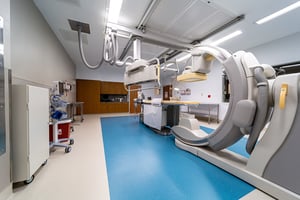Total joint replacement has been a catalyst of growth in the ASC market for several years. It is...
15 Critical Details When Leasing Space for an ASC
Leasing tenant space for an ambulatory surgical center presents a number of unique concerns that should be evaluated and negotiated by the ASC tenant and landlord, as well as their advisors, prior to entering into a lease agreement. The following are fifteen items that should be taken into consideration.
1. In states that require a Certificate of Need (CON) to establish an ASC, there is often a requirement that a lease be drawn prior to the CON being accepted. With the length of time to attain CON approval taking months or even years, it is necessary to include contingencies in the lease dictating start dates or potential termination based on CON approval. Similar contingencies should be included related to achieving successful licensure.
2. CMS Conditions for Coverage require the ASC to be physically separate from other tenants, especially other medical facilities. The ASC must be a “distinct entity” and must be separated from other facilities by a minimum one hour fire barrier. Under certain circumstances, the ASC must be separated from tenants on floors above and below as well. Access to other tenant spaces for this and other aspects of the construction must be contemplated in the lease.
3. It is common for landlords to require access to tenant spaces for maintenance and repairs among other things. In the case of an ASC, this can produce deleterious effects if not properly controlled. Access to restricted areas should be limited to off hours and provisions should be made to maintain sterile conditions. Patient privacy, including access to patient information, should be respected.
4. The utility needs of an ASC usually exceed those of a standard office or retail tenant. Electrical loads, water supply, sanitary drains, and base building HVAC systems may need to be enhanced or replaced, and this should be addressed prior to signing a lease.
5. Verify that the building will accommodate the ASC’s hours of operation. Not only might the ASC need to open early for set up and pre-operative services, but it might need to close later to accommodate extended recovery times.
6. Operating suite HVAC systems must maintain stipulated environmental conditions 24/7/365. If the ASC relies of base building systems to provide chilled or heated water, or ventilation air, it is critical to make certain those systems will be available at all times or that other measures are in place. Be aware that some building systems are designed to run heating and cooling seasonally. In these cases, the ASC must have a way to attain those services in the opposing seasons as ASC HVAC systems usually rely on both throughout the year to maintain proper temperature and humidity control.
7. An ASC is required to have an essential electrical system with an uninterruptable fuel supply. Identifying a location for an emergency generator is critical, especially where options are limited such as in densely packed urban locations. Usually a space on the ground as close to the ASC as possible is best.
8. There is also usually the need to locate large HVAC equipment on site, often on the roof. If the tenant space is on a lower level or remote from the equipment location, the ability to distribute ducts, pipes, and conduits, to and from those locations should not be overlooked.
9. Base building systems such as elevators, HVAC systems, and emergency egress lighting, serving the ASC occupants may need to be powered by the ASC's essential electrical system. It is a good idea to square this away up front to avoid complications later.
10. If the ASC is on an upper floor, an elevator sized to accommodate a gurney should be available to transport patients in an emergency. If there are no appropriately sized elevators, one may need to be added. A mutually agreeable location should be determined prior to signing the lease, as well as an understanding of who will foot the bill.
11. Further, a minimum width egress pathway (often six feet wide) may be required from the ASC to the exterior of the building. If one is not available, modifications to the base building may be necessary to meet this requirement.
12. There are usually requirements for a minimum number of parking spaces, and their location and availability are essential. Ideally the spaces should be as close to the ASC as possible. Often dedicated spaces will need to be marked with signage. Typically patient loading and unloading areas need to be under cover. Parking is usually a precious commodity in real estate, so it is imperative to address the quantity and location of parking spaces in the lease.
13. Handling of medical waste and delivery of ASC supplies, especially in a multitenant situation, may need to be considered. For construction, especially for centers on upper floors, determine how medical and other large equipment will be brought to the tenant space.
14. As ASC's rely more heavily on electronic medical records, telemedicine, digital image handling, and other data sharing and storage intensive technologies, access to secure, high speed data networks is essential. The lease should allow for the tenant to acquire the access to the systems and providers essential to their operations.
15. During construction, it is likely that contractors will need access to adjacent tenant spaces to run services, complete fire rated demising assemblies, and perform other work. Modifications to fire alarm, sprinkler, and other important systems will likely require building wide shutdowns as well. Assure that there will be cooperation and that the proper protocols will be in place for a seamless construction process.
These are many of the important physical plant items to consider when negotiating a lease for your ASC. Involving architects and engineers experienced in ASC site selection early in the process may help prevent costly problems down the road. Hardaway|Sziabowski has assisted numerous clients in the due diligence, design, and construction of ASC's. Please contact us at this link if we can assist you.



